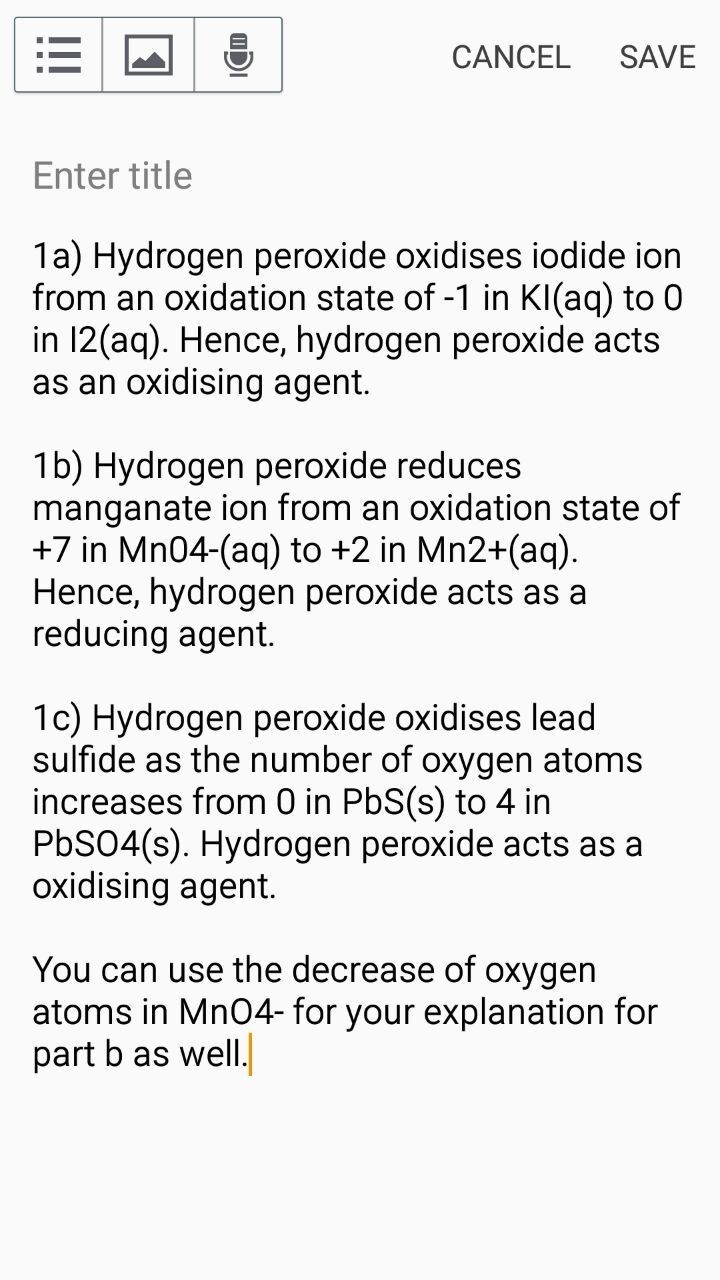Ask Singapore Homework?
Upload a photo of a Singapore homework and someone will email you the solution for free.

Question
secondary 3 | Biology
One Answer Below
Anyone can contribute an answer, even non-tutors.

Combined chem qs
When we want to find out whether H2O2 is an oxidising or reducing agent, we must see what H2O2 does to the reactant it's reacting with. To do this, we look at the oxidation state of the other reactant both BEFORE and AFTER the reaction to determine if it has been oxidised or reduced. If the other reactant has been oxidised, H2O2 is an oxidising agent. If the other reactant has been reduced, H2O2 is a reducing agent
a)
other reactant before rxn = KI
Oxidation state = -1
Other reactant after rxn = I2
Oxidation state = 0
Conclusion: the other reactant is oxides from -1 to zero this H2O2 is an oxidising
Note: the other reactant is not H2SO4 as it is just a catalyst. You could think of it as since it is an acid, acids don't normally take part in redox reactions
B)
Other reactant before rxn = MnO4-
Oxidation state = +7
Other reactant after rxn =Mn2+
Oxidation state = +2
Conclusion: since other reactant is reduced from +7 to +2 , H2O2 acted as a reducing agent
C)
Other reactant before = PbS
Other reactant after = PbSO4
Conclusion : since PbS is oxidised to PbSO4 as seen in the increase in Oxygen atoms from reactant to product , H202 acted as a oxidising agent
See 1 Answer




